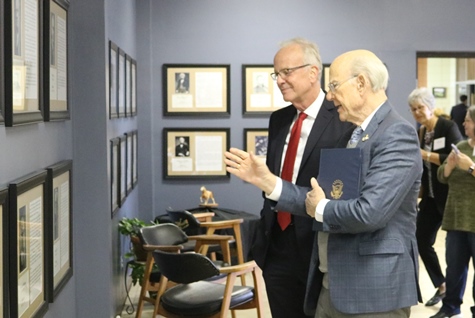by Noah Taborda, Kansas Reflector
Topeka — Kansas lawmakers announced Tuesday they will hold a second round of town hall meetings to gather public input on the redistricting process, but they won’t attend the meetings in person.
The House and Senate Committees on Redistricting will hold four meetings late next month, organized by congressional district. Kansans may attend one of the various locations set up in cities across the state or join legislators online to provide testimony virtually.
All committee members will attend via the web.
Republican leaders scheduled 14 town halls in August to gather opinions about how political boundaries should be redrawn for 2022. The schedule was announced on a Friday night just nine days before the first of the meetings, most of which took place during the work day. Full U.S. Census data hadn’t been released yet.
Democrats, election advocates and speakers at the forums complained about the process and asked for a new round of town halls.
“It’s important to remember that redistricting is a multi-year process that starts with these town halls to get a gauge on what Kansans want,” said House Speaker Ron Ryckman, R-Olathe, in an August statement. “Additional public input will be needed.”
All of the meetings in the second round will take place from 5:30 to 7:30 p.m.
Kansans can provide in-person testimony for the 2nd District on Nov. 22 in Atchison, Ottawa, Independence or on Native American reservations; the 1st District on Nov. 23 in Emporia, Great Bend, Liberal or McPherson; the 4th District on Nov. 29 in Newton or El Dorado; and the 3rd District on Nov. 30 in Bonner Springs or Stilwell.
Those wishing to testify must notify the Kansas Legislative Research Department at least 24 hours in advance. Kansans may also submit written testimony.
Sen. Dinah Sykes, D-Lenexa, said she hoped there would be guidelines for the redistricting process in place before the next round to provide further clarity for the public on the goals of redistricting.
“I think we got a good direction from those original town halls, and several are wanting to know, what is the criteria that we’re looking for? What are we holding ourselves accountable to as we’re redrawing these maps?” Sykes said during a meeting of the Legislative Coordinating Council.
“Your feelings and hopes are duly noted,” said Senate President Ty Masterson, R-Andover, in response.
The value of having these town halls is diluted without guidelines in place, said Davis Hammett, CEO and president of Loud Light. He said it is currently unclear what Kansans should be testifying about.
“I’m very concerned and I think those questions need to be answered,” Hammet said. “Why should someone testify, right? That’s what needs to be clarified. Why haven’t these basic things been addressed yet?”
Kansas Reflector stories, www.kansasreflector.com, may be republished online or in print under Creative Commons license CC BY-NC-ND 4.0.
See more at https://kansasreflector.com/2021/10/26/kansas-legislators-to-host-second-round-of-redistricting-town-hall-meetings-in-november/






